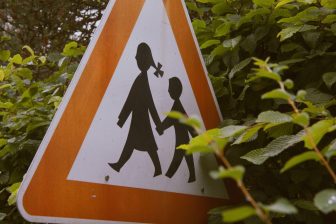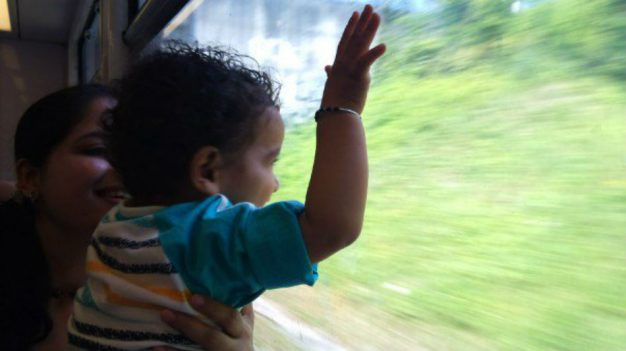
Public space on wheels: kids on public transit
The design of our cities and towns plays a monumental role in instilling a lasting sense of stewardship among children. As discussed in my last piece, public transportation is a key component of that public space, and (bonus!) it’s mobile. It’s hardly a coincidence that most lists of ‘best cities in the world for families’ are comprised of cities and towns with robust public transportation systems – more here, here, and here.
Well-functioning cities are a collection of well-functioning systems. For example, utilities, schools, hospitals, food, and yes – public transportation are always benchmarks for such cities. In fact, public transit can and should serve as a backbone for other systems to build on given that it’s the safest option by statistics alone. Unfortunately, only a handful of American cities have a system that lets you get around conveniently without dramatically changing your lifestyle as a fully-functional adult by yourself, let alone trying to maneuver with children.
Why bother with child-friendly public transportation?
As a city amenity, a system that works for the least autonomous section of the society works for everyone else. Children and their caregivers make up a significant portion of the population in most cities and towns are inherently more vulnerable than most other potential riders of Public Transportation. Automobile manufacturers have been focused on this population from the very beginning and have therefore successfully captured the market. Status quo public transit, on the other hand, works best for able-bodied adults travelling with minimum luggage. As soon as these people transition in life and become caregivers, they stop relying on public transit for most trips. In order to create a system that functions as the backbone of the built environment, designers and policy makers must flip their focus to serving children and caregivers as if they were all-purpose riders.
There are many benefits of Public Transit that serve all people equally in a city ranging from being inherently green, communal, space-efficient, and boosters of economy in the regions they serve. For children, however, the benefits go much further.
Cognitive health
Public Transportation supports cognitive development among young children by providing opportunities to interact with the built environment using a combination of motor functions – walking, swiping, boarding, and looking out the window. Research shows the prevalence of a ‘windshield perspective’ among children that are driven around in private automobiles. In absence of any active interaction with the built environment, most kids aren’t able to tell where they are or how to get wherever they may need to. Riding public transit could provide the most powerful antidote since it relies heavily on walking (TransitCenter 2016) with proven cognitive benefits.
“We walk to most nearby places, and our daughter walks along. She explores so much in the process and has a great sense of direction. At 23 months old, she walks independently on the streets – I cannot imagine that kind of daily exposure to the external world if I was driving her around in cars all the time.” Said Nimisha Tushar Bhatia, Principal Product Manager at Amazon and mother of a toddler living sans-car in Seattle.
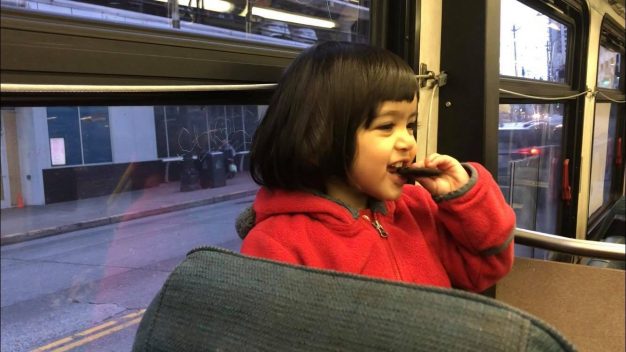
With Amazon on the hunt for their second headquarter, a city with robust public transit embedded in a walkable fabric should be a prime consideration to attract young families like Nimisha’s. Better yet, the retail giant should invest in one for tangible returns.
Social Development and sense of autonomy
Public Transit that works for all people can become a window into the society at large. How can we expect to raise caring, hospitable, tolerant, and engaged children if they never get to interact with people from all walks of life whose reality may differ from their own? It’s been observed and documented that at any age, our mode of transportation has a tremendous impact on our social perception. Children who ride the bus or train know how the world around them looks, sounds, and feels, allowing them the opportunity to develop a more acute social awareness. It also exposes them to the various mini-interactions – from saying hello to strangers, the courtesy nod, pardoning yourself before brushing past someone, politely asking for a seat on a crowded bus, or tackling less than desirable elements – all staple on the humble bus.
Acquiring a driver’s license has been the strongest indicator of autonomy and independence in suburban communities that lack a functional public transit system since the rise of the automobile. Transit, on the other hand, provides opportunities to develop the sense of independence fairly early on. From getting to purchase or use transit passes to tracking stations, transit helps strengthen the sense of autonomy in growing children. Access to good public transit among other things is a big reason for the level of social awareness and autonomy among Japanese youth, as documented by Dwayne Dixon in his doctoral dissertation.
Physical activity and health
Researchers at the University of British Columbia found that people who ride public transit are three times as likely to meet the CDC’s daily requirements for physical activity. On the furthest extreme is the fact that automobile crashes are the leading cause of death among children below the ages of 13 in the United States. “While some people might feel more secure inside a car, the numbers don’t lie – we’ve long known that public transit is a far safer way to get around.” said Steven Higashide, Director of Research at TransitCenter. Add the benefits of walking to the mix, and you have a mode that can be one of the biggest pieces of solving the childhood obesity puzzle.
Family time
AAA Foundation’s year one survey revealed that Americans drive an average of 29.2 miles and spend 46 minutes a day behind the wheel. A significant percentage of the driving population spends more time than that for the same activity which keeps them from interacting with friends and family. Taking public transit together, as families do in many parts of the world, provides opportunities for conversation. This time can easily be translated into an educational experience by pointing out important buildings, urban activities, and interesting people to growing children.
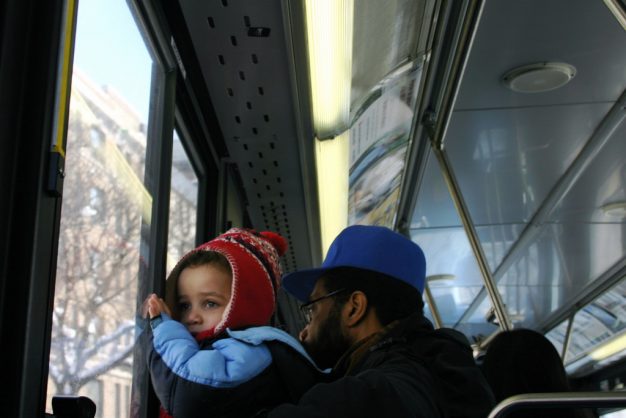
This brings us to our next benefit. Public transit helps build a strong sense of place and home among children. Contrary to the windshield perspective, children who take public transit combined with walking and/or bicycling have a better sense of where they are and how one place differs from another. Their experience of a place is more sensory than of those buckled into a seat with no flexibility (or need) to exercise self-judgement. The built environment leaves a lasting imprint on the young rider becoming a part of their identity (dive deeper into ‘Place Identity’ through this 1983 environmental psychology piece from CUNY)
Nuts and bolts of child friendly public transit
We live in a convenience driven world. Unless you are driven by a passion for the environment, which I am guilty of, chance are you make choices based on how they work specifically for you. This applies to almost all facets of life from choosing where to live, what to eat, all the way to your choice of electronic devices. In order to attract and retain families as users of the public transit, it needs to be designed to be more convenient that driving. “Having end-to-end connectivity is extremely important. If I have to cover a part of my trip in a taxi/uber, it doesn’t work, because then I am required to lug a car seat around which is impractical.” – Shared Nimisha who continues to ride a bus in Seattle with her 2 year old. Here is how we might be able to create a system to serve her better –
Transit system design and system frequency
Transit only works in places that have a built environment latched on to the same bones and providing the critical mass to serve. This would include strategic clustering of daily destinations (for example commercial activity, a mix of housing types for families, public/play spaces, markets, schools, civic buildings, and utility businesses) around transit lines. With the re-rise of transit oriented development, there is plenty of guidance available on this subject. Read more – here.
Any family of three or more can probably write stories about the unexpected delays in getting out of the house. From the misplaced backpack to a full diaper, there are plenty of reasons why people choose to leave on their own time (in their own vehicle). However, a system with higher frequency, and not just at rush hour, can easily ameliorate those concerns. In addition to families, peak hour priority service disproportionately affects service workers, and immigrants with elevated concerns or fewer means. There are plenty of places where people don’t check train or bus schedules before heading to the station, and the system must prioritize service in order to achieve that.
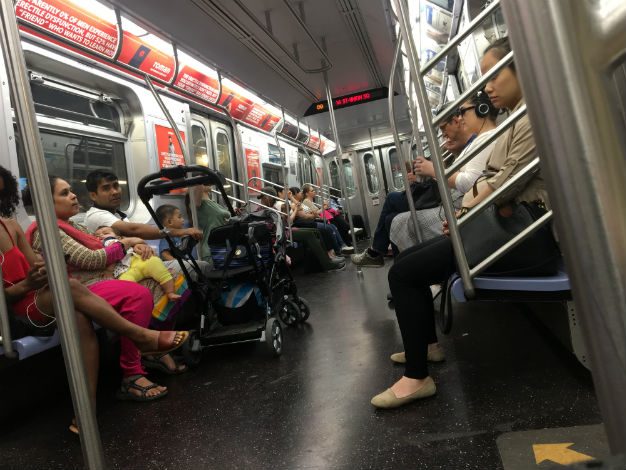
Stop placement and the first and last mile
Transit service can be a make or break for families based on the location of the closest station stop. When you are pushing a stroller and carrying 3 bags, the extra block or crossing seems ten times further. The same is true for the design of the stop itself and the presence or absence of an overhead shelter and comfortable seating. The NACTO guide on transit station design is full of guidance on the subject.
“Another aspect critical to the attractiveness of a transit system is the first and last mile connectivity” asserts Steven. A walkable fabric is inherently more pleasing as not only the in-between (between home and the bus stop) but as the backdrop for the journey as well. A combination of ample sidewalks, engaging facades, and safe intersections; or, paved trails, wayfinding, with seasonal foliage, would both make for pleasurable last mile connections with a child.
Ticketing and getting on the bus or train
Off board fare collection is the key to avoiding on-station delays for BRT systems. However, most such systems are cumbersome to maneuver with children who may not require a ticket, especially if there is a turn-style involved. Special entry lanes can get backed up pretty quickly negating any seconds saved in boarding. This might be an area for innovation with tremendous benefit for families.
Boarding areas for public transit must pass the wheelchair test for the system to be cutting edge. People pushing bigger strollers and wheelchairs are much more dependent on public transit and not always well served. Getting on the bus should not be a matter of life or death for families with small children and should be accommodated through elevators, ramps and dedicated boarding area. Head over to TransitCenter to learn more on the subject.
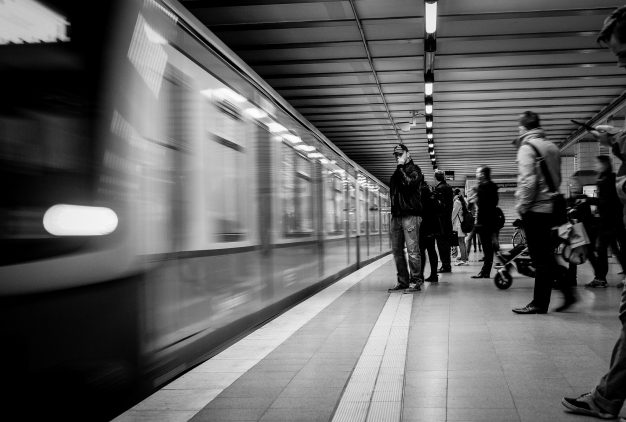
Vehicle design for families
Not all buses and trains are created equal. The ones more suitable for children include space for storing/securing strollers, flexible seating that allows for sitting alone or groups, and flexibility to move between cars in case of an emergency. MTA’s recent consensus on open gangways and Sydney’s reversible seat backs will make both those systems better for kids.
Last but not the least…
Great public transit system is a collection of destinations – the stations
Granted that not all train stations can be like Grand Central, but they each can be unique nonetheless. For example, these musical swings at a bus stop in Montreal. Let’s face it, transit is prone to occasional (or frequent) delays and kids are bound to get bored. Train station are opportunities to build in play spaces, retail, and utilitarian shopping (think farmers markets) to make them inseparable components of the built environment and the communities they serve. They fit Kevin Lynch’s description of nodes or landmarks perfectly, only when designed to be them. Unique public transit stations have the potential to contribute to a child’s evolving ‘sense of place’ and ‘place identity’. Get inspired by thinking beyond the station.
Food for thought
It will be naive to expect everyone to hop on the bus as soon as a good system is put in place. However, even if 40% of families in cities and towns start sharing space with others on public transit, we can achieve significant change. Right now, those percentages hover around 10% for a somewhat well-used system in America (cities like New York, Chicago, San Francisco and Boston being exceptions to the rule). However, it’s the responsibility of planners, policy makers and community leaders to design a system that works, before expecting to see any change in user behaviour. Afterall, it was the same group of people emboldened by private enterprise that systematically replaced old trolley lines with highways. There is something to be said about the soccer mom from suburban Florida who goes to Paris on vacation with the kid and rides trains all day with ease. But as soon as she’s back, the SUV gets back on the road. It isn’t public transit she is opposed to, it just may be the bus system in her hometown. We adapt to our environment and it’s about time that we start doing a better job of designing it with our future citizens in mind.
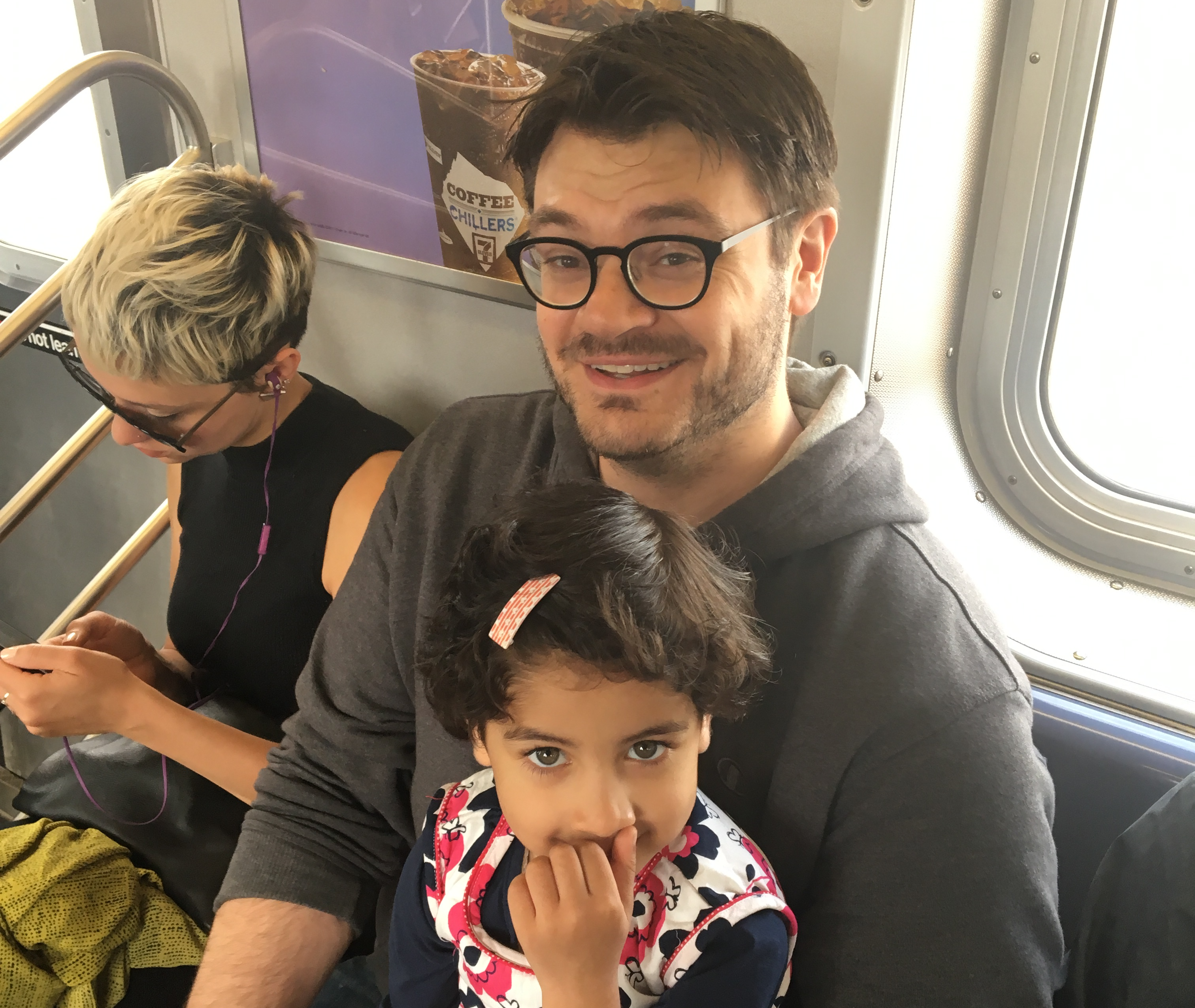
(Special thanks to Steven Higashide of TransitCenter – a foundation advocating to put public transit in the center of cities, for lending his expertise to the piece. And to Nimisha Tushar Bhatia, car-free mother of a 23 month old and Principal Product Manager at Amazon for her candid input)



